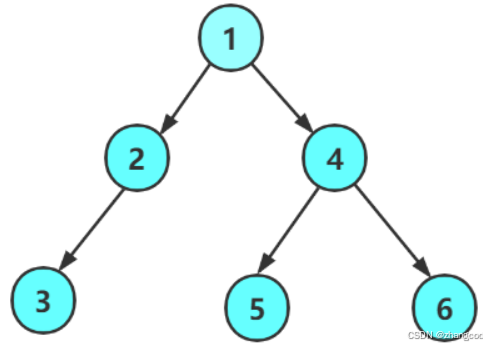目录
1.知识回顾:高度(也称深度)
以这个二叉树为例,其高度为4

2.分析
"分而治之"的思想+递归:
将任务交给多个"下属"去做
递推:
整个树的高度==根节点的高度+左右子树高度中较大的高度
左子树的高度==根节点的高度+其左右子树高度中较大的高度
右子树的高度==根节点的高度+其左右子树高度中较大的高度
......
回归:当节点为NULL时(即遇到空树),回归
核心思想:左树和右树高度较大的那个将高度的结果+1(+1代表左树或右树的根节点的高度)报告给根
设计代码框架
节点为NULL时(即遇到空树)的情况优先判断,由于TreeHeight函数的返回值为int,因此return 0;
cpp
int TreeHeight(BTNode* root)
{
//节点为NULL,优先处理
if (root==NULL)
return 0;
//如果不为NULL
{
//返回左右子树高度较大的那个
}
}返回左右子树高度较大的那个的写法一:if语句
cpp
if (TreeHeight(root->left) > TreeHeight(root->right))
TreeHeight(root->left) + 1;
else
TreeHeight(root->right) + 1;返回左右子树高度较大的那个的写法二:三目操作符
cpp
return TreeHeight(root->left) > TreeHeight(root->right) ? TreeHeight(root->left) + 1 : TreeHeight(root->right) + 1;3.代码
由上述分析可知:
cpp
int TreeHeight(BTNode* root)
{
if (root==NULL)
return 0;
return TreeHeight(root->left) > TreeHeight(root->right) ? TreeHeight(root->left) + 1 : TreeHeight(root->right) + 1;
}4.反思
问题
当二叉树的节点节点过多结构较复杂时,会发现代码的执行效率低下,运行时间过长,是什么原因导致的?
答:运行时间过长肯定是因为递归调用的次数过多
出问题的代码
cpp
return TreeHeight(root->left) > TreeHeight(root->right) ? TreeHeight(root->left) + 1 : TreeHeight(root->right) + 1;
}先进行TreeHeight(root->left) > TreeHeight(root->right),之后执行TreeHeight(root->left) + 1或TreeHeight(root->right) + 1
显然TreeHeight函数被反复调用,越往下的节点,TreeHeight对其调用的次数越多,问题出在:比较时高度时并没有保存函数的返回值,时间复杂度为
改进后的代码
只需要在比较时保存TreeHeight函数的返回值即可
cpp
int TreeHeight(BTNode* root)
{
if (root == NULL)
return 0;
int leftheight = TreeHeight(root->left);
int rightheight = TreeHeight(root->right);
return leftheight > rightheight ? leftheight + 1 : rightheight + 1;
}Tree.h写入
cpp
#pragma once
#include<stdio.h>
#include<assert.h>
#include<stdlib.h>
typedef int BTDataType;
typedef struct BinaryTreeNode
{
BTDataType data;
struct BinaryTreeNode* left;
struct BinaryTreeNode* right;
}BTNode;
BTNode* BuyNode(BTDataType x);
BTNode* CreateTree();
int TreeHeight(BTNode* root);Tree.c写入
cpp
#include "Tree.h"
BTNode* BuyNode(BTDataType x)
{
BTNode* node = (BTNode*)malloc(sizeof(BTNode));
if (node == NULL)
{
perror("malloc");
return NULL;
}
node->data = x;
node->left = NULL;
node->right = NULL;
return node;
}
BTNode* CreateTree()
{
//写入各个节点的数据域
BTNode* node1 = BuyNode(1);
BTNode* node2 = BuyNode(2);
BTNode* node3 = BuyNode(3);
BTNode* node4 = BuyNode(4);
BTNode* node5 = BuyNode(5);
BTNode* node6 = BuyNode(6);
// BTNode* node7 = BuyNode(6);
//设置left和right指针
node1->left = node2;
node1->right = node4;
node2->left = node3;
node4->left = node5;
node4->right = node6;
//node3->right = node7;
//返回根节点的指针
return node1;
}
int TreeHeight(BTNode* root)
{
if (root == NULL)
return 0;
int leftheight = TreeHeight(root->left);
int rightheight = TreeHeight(root->right);
return leftheight > rightheight ? leftheight + 1 : rightheight + 1;
}main.c写入
cpp
#include "Tree.h"
int main()
{
BTNode* root=CreateTree();
printf("TreeHight=%d", TreeHeight(root));
}执行结果
